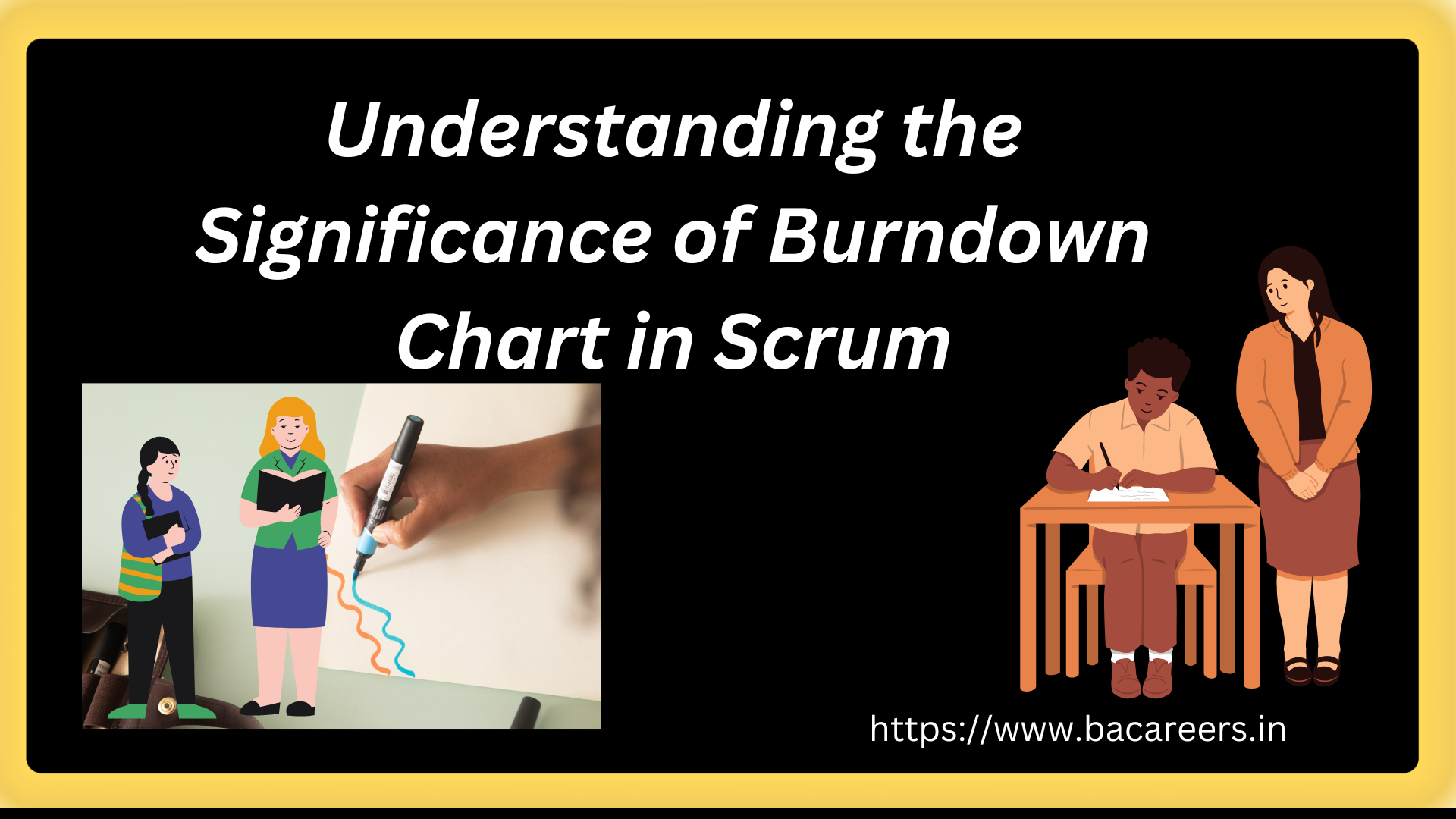Introduction:
Scrum, an agile framework for project management, has gained widespread popularity for its ability to foster collaboration, adaptability, and iterative development. One of the key tools utilized in Scrum to monitor and manage progress is the Burndown Chart. This visual representation plays a crucial role in helping teams track their work and make informed decisions throughout the development process.
The Burndown Chart is a vital tool for Scrum teams to track their progress and manage their work effectively. This chart shows the amount of work remaining in a Sprint and how quickly the team is completing that work. It is an excellent way to visualize the team’s progress and identify any issues that may arise.
The Burndown Chart is especially useful for Scrum teams because it helps them identify potential roadblocks and bottlenecks in their process. If the chart shows that the team is falling behind schedule, it may indicate that there are problems with the team’s workflow or that some team members are not contributing as much as they should be.
On the other hand, if the Burndown Chart shows that the team is ahead of schedule, it may indicate that the team is working too quickly and may need to take on additional work to stay on track. This chart allows the team to adjust their workload and prioritize tasks accordingly, ensuring that they can complete their work on time and within budget.

What is a Burndown Chart?
A Burndown Chart is a graphical representation that illustrates the progress of a Scrum team towards completing the user stories or tasks in a sprint. It provides a clear visual indication of the work remaining versus time, making it an invaluable tool for teams and stakeholders to assess how well they are adhering to the sprint goals and timelines.
Components of a Burndown Chart:
- X-Axis (Horizontal Axis): Represents time, typically in days or sprints.
- Y-Axis (Vertical Axis): Represents the amount of work remaining, often measured in story points or hours.
- Ideal Burndown Line: This is a straight line that depicts the ideal progress, showing a gradual decrease in work over the course of the sprint.
- Actual Burndown Line: Represents the actual progress of the team. It is plotted based on the daily updates of the remaining work.
How Burndown Charts Work:
- Sprint Planning: At the beginning of a sprint, the team estimates the effort required for each user story or task and assigns story points or hours.
- Daily Updates: As the sprint progresses, team members update the Burndown Chart daily based on the work completed and the remaining effort.
- Tracking Progress: The Burndown Chart visually depicts whether the team is ahead, behind, or on track to meet the sprint goals. Deviations from the ideal line can indicate issues that need attention.
Benefits of Using Burndown Charts:
- Transparency: Provides a transparent view of the team’s progress, making it easier for stakeholders to understand the project’s status.
- Early Detection of Issues: Enables early identification of potential roadblocks or bottlenecks, allowing the team to take corrective actions promptly.
- Motivation: Acts as a motivational tool for the team, fostering a sense of accomplishment as they see the remaining work decreasing.
- Facilitates Planning: Helps in better planning for future sprints by providing insights into the team’s velocity and capacity.
Conclusion:
The Burndown Chart is an essential tool in the Scrum framework, promoting transparency, collaboration, and effective decision-making. By offering a visual representation of the team’s progress, it empowers both the development team and stakeholders to work together towards achieving the sprint goals. As a dynamic and adaptable tool, the Burndown Chart contributes significantly to the success of Scrum projects, making it a cornerstone of agile project management.
Overall, the Burndown Chart is an essential tool for any Scrum team, and understanding its significance is crucial for effective project management. By using this chart, teams can stay on track, identify potential issues, and adjust their workflow accordingly to ensure project success.

Business Analyst , Functional Consultant, Provide Training on Business Analysis and SDLC Methodologies.

helloI like your writing very so much proportion we keep up a correspondence extra approximately your post on AOL I need an expert in this space to unravel my problem May be that is you Taking a look forward to see you
Nice blog here Also your site loads up very fast What host are you using Can I get your affiliate link to your host I wish my site loaded up as quickly as yours lol